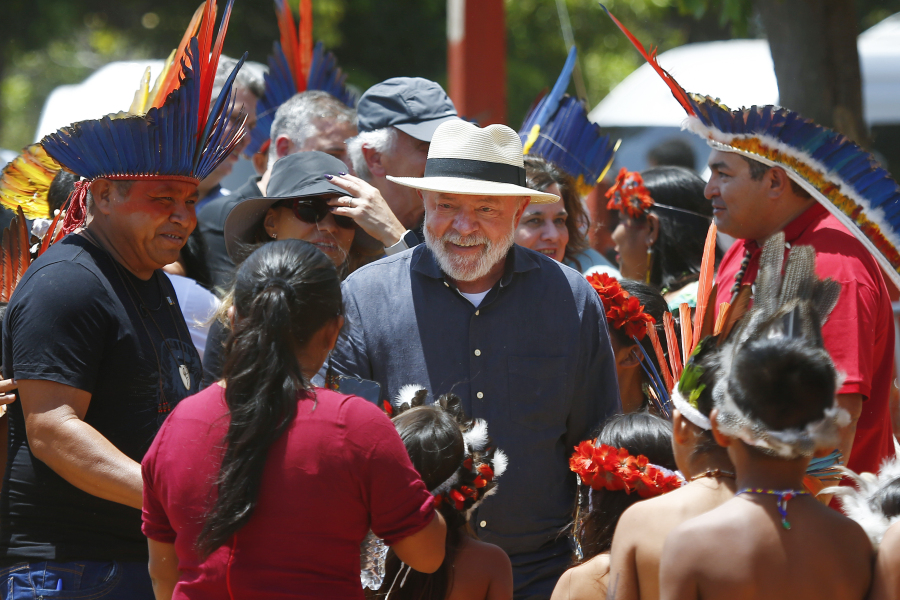BRASÍLIA (AP) — Brazil President Luiz Inácio Lula da Silva on Friday granted official recognition of nearly 800 square miles of Indigenous lands, following through on a campaign promise in a move that also protects critical Amazon rainforest from commercial exploitation.
Lula recognized six ancestral lands. The two largest are in the Amazon, the world’s largest tropical forest and an important carbon sink that helps moderate climate change. The total area of recognized lands in the biome is 161,500 hectares (620 square miles).
The land remains under the federal government’s jurisdiction, but the designation grants Indigenous peoples the right to use it in their traditional manner. Mining activities are prohibited, and commercial farming and logging require specific authorizations. Additionally, non-Indigenous individuals are forbidden from engaging in any economic activity on Indigenous lands.
Lula’s action was welcomed by the Indigenous movement, but not without some frustration that it was limited in size. In January, his government had pledged to create 14 new territories in the short term.
The largest new area is located in the Amazonas state. The Nadöb people’s Uneiuxi Indigenous Territory has been expanded by 37% to 554,000 hectares (2,100 square miles) of primary rainforest. It is in a remote area — from the main village, it takes four days to travel to the closest city in a low-powered motor boat, the most common mode of transportation in the region.
“The demarcation will make the Nadöb people feel safe and protected within our territory. That is where we live, fish, hunt, and gather fruits. We want to continue there, like our ancestors,” chief Eduardo Castelo, 45, told The Associated Press in a phone interview. “We don’t want the impact of the whites on our territory.”
Indigenous demarcation had been halted since 2018, following far-right President Jair Bolsonaro’s promise to the agribusiness sector, which opposes new Indigenous demarcations.
Studies have shown that Indigenous-controlled forests are the best preserved in the Brazilian Amazon. But deforestation grew by 195% between 2019 and 2021 in comparison with the four previous years, according to a recent study published in the journal Nature. This destruction has been largely caused by non-Indigenous people, from land-robbers to illegal miners.
The Amazon rainforest covers an area twice the size of India and is a crucial buffer against climate change as it absorbs a significant amount of carbon dioxide. But deforestation in Brazil, which holds two-thirds of the biome, has caused almost half of its carbon emissions. The eastern Amazon’s destruction is so extensive that it has now become a carbon source instead of a carbon sink for the Earth.
Lula, who beat Bolsonaro in the 2022 elections, vowed to resume land demarcations. His government also created the Ministry of Indigenous Peoples, responding to a demand from the grassroots movement.
Associated Press climate and environmental coverage receives support from several private foundations. See more about AP’s climate initiative here. The AP is solely responsible for all content.



